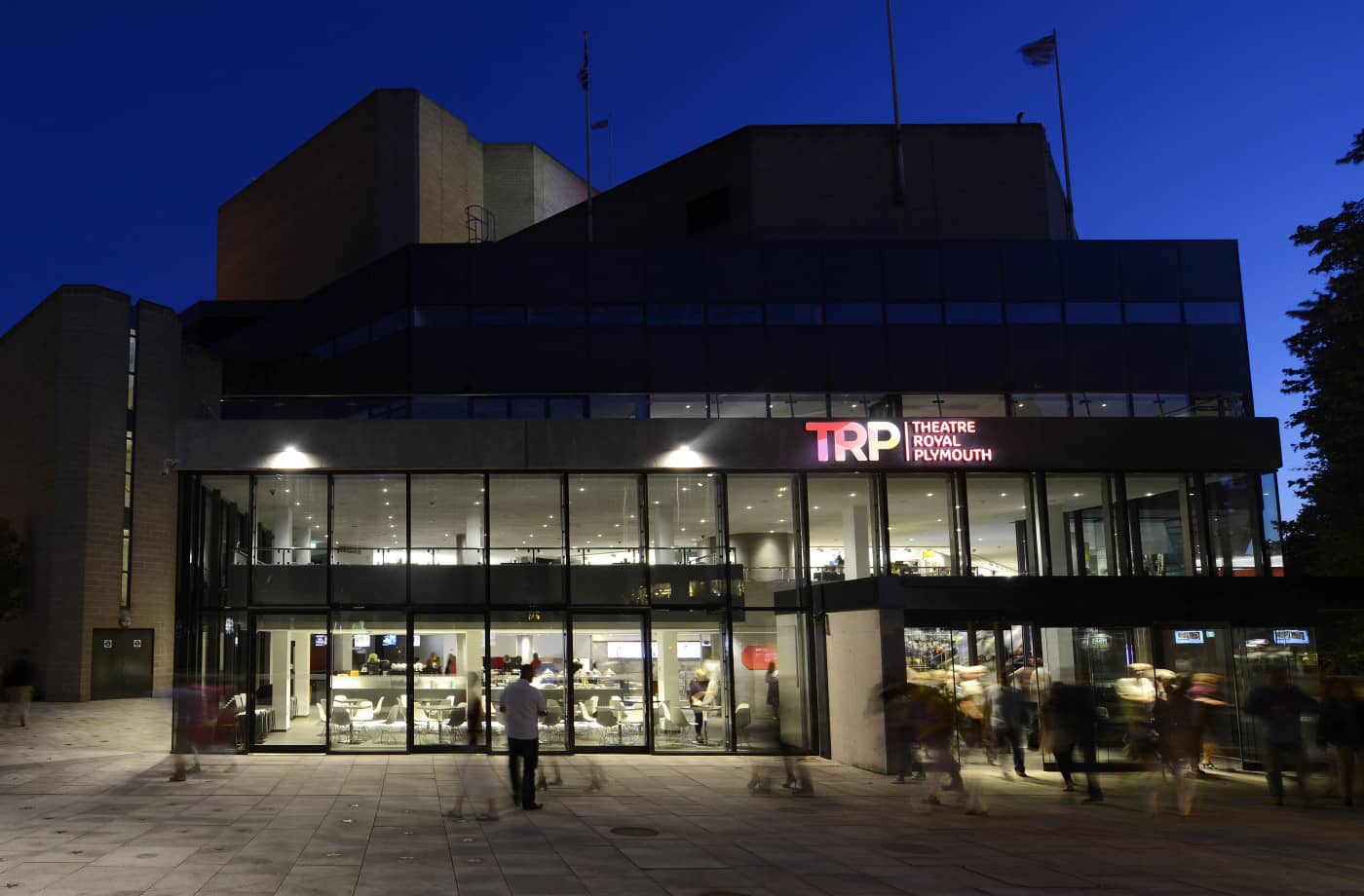The Messenger statue
UK's largest bronze statue, a monumental modern art piece by Joseph Hillier outside Plymouth's Theatre Royal.

Highlights
Must-see attractions

Social
From TikTok & Reddit
Best Time
Fewer crowds, better photos
The Messenger statue
Best Time
Fewer crowds, better photos

Highlights
Must-see attractions
UK's largest bronze statue, a monumental modern art piece by Joseph Hillier outside Plymouth's Theatre Royal.
"Magnificent statue, though its creation sparked local debate about resources and impact."
📸 Best Photo Spots
Capture 'The Messenger' from various angles, especially during golden hour for dramatic lighting.
🤔 Local Perspectives
Engage with the local context; the statue's creation has been a topic of discussion.
Highlights
Discover the most iconic attractions and experiences

The Messenger Statue
Outside the Theatre Royal, Plymouth
UK's largest bronze statue, a striking modern art installation by Joseph Hillier.

Theatre Royal Plymouth
Adjacent to The Messenger statue
A prominent cultural venue, the statue's placement here is a key part of its narrative.
Plans like a pro.
Thinks like you
Planning Your Visit
Timing Your Visit
Understanding the Context
Best Times
Insider Tips
from TikTok, Instagram & Reddit
📸 Best Photo Spots
Capture 'The Messenger' from various angles, especially during golden hour for dramatic lighting.
🤔 Local Perspectives
Engage with the local context; the statue's creation has been a topic of discussion.
🚶♀️ Explore the Area
Combine your visit with a stroll around Royal Parade and the nearby Elizabethan Gardens.
Tips
from all over the internet
📸 Best Photo Spots
Capture 'The Messenger' from various angles, especially during golden hour for dramatic lighting.
🤔 Local Perspectives
Engage with the local context; the statue's creation has been a topic of discussion.
🚶♀️ Explore the Area
Combine your visit with a stroll around Royal Parade and the nearby Elizabethan Gardens.
What Travellers Say
Reviews Summary
The Messenger statue is a visually striking, large-scale bronze artwork that garners admiration for its artistic merit and impressive size. However, its creation has sparked debate among locals regarding the use of funds and the impact on the urban landscape, leading to mixed opinions on its overall value to Plymouth.
"The largest statue in the country using the lost wax method, designed by Cornish artist Joseph Hillier, would have given this five stars but for the fact a Small-leaved Lime (Tilia cordata), part of the avenue of similar Lime trees planted on the South side of Royal Parade in 1948, was cut down to make way for this statue, the Plymouth City Council gardener who planted this avenue of trees was the late Ronald James Seymour."
Baz Willmott
"The UK's largest bronze statue.
Many people believe the money could have been better spent on something else. It is a fact that money could always be spent on something else. The Theatre Royal has decided to spend its money on The Messenger. I don't know its relevance to Plymouth or why they chose this design. If I were rating the decision the score would be zero. But the statue is magnificent so it rates 5 stars."
Andrew McCrorie
"I don't really like it because I think a waste of time and money"
John Lucas
What People Like
What People Dislike
Frequently Asked Questions
🚇 🗺️ Getting There
The Messenger statue is located outside the Theatre Royal Plymouth, easily accessible by public transport. Numerous bus routes stop near Royal Parade, and the nearest train station is Plymouth Station, a short walk away. Parking is available in nearby multi-storey car parks.
Yes, there are several car parks close to the Theatre Royal and Royal Parade, including the Drake Circus car park and the Theatre Royal car park.
Absolutely! The statue is centrally located on Royal Parade, making it a pleasant walk from most parts of the city center.
🎫 🎫 Tickets & Entry
No, The Messenger statue is an outdoor public art installation and can be viewed at any time without a ticket.
As an outdoor sculpture, The Messenger statue is accessible 24/7. However, the surrounding area and Theatre Royal have their own operating hours.
📸 📸 Photography
For the best photographic opportunities, aim for early mornings or late afternoons to catch the 'golden hour' light, which enhances the bronze's texture. Weekdays are generally less crowded, allowing for unobstructed shots.
Experiment with different perspectives. Shooting from a low angle can emphasize the statue's imposing size, while capturing it with the Theatre Royal in the background provides context.
Tripods are generally permitted in public spaces, but it's always a good idea to be mindful of other visitors and avoid obstructing pathways, especially during busy times.
🎫 🤔 Onsite Experience
The statue, designed by Joseph Hillier, is the UK's largest bronze statue and was commissioned by the Theatre Royal. Its relevance to Plymouth is a subject of local discussion, with some appreciating its artistic merit and others questioning the resources allocated.
The Messenger statue is made of bronze, utilizing the lost-wax casting method, which is a traditional technique for creating detailed metal sculptures.
It is the largest bronze statue in the UK, standing at an impressive height that commands attention on Royal Parade.
The statue was designed by Cornish artist Joseph Hillier and installed outside the Theatre Royal. Its creation involved some controversy regarding the use of public funds and the removal of a tree to make way for it.
For Different Travelers
Tailored advice for your travel style
Art Enthusiasts
Beyond the statue, explore Plymouth's broader art scene, including galleries and public art projects. Understanding the local discourse surrounding 'The Messenger' can also add an interesting layer to your appreciation of contemporary public art and its reception.
History Buffs
Consider the historical context of Royal Parade where the statue stands. The city's maritime history and its role in significant historical events provide a rich backdrop to any visit, offering a contrast to the modern 'Messenger' sculpture.
Deep Dives
In-depth insights and expert knowledge
The Art and Controversy of 'The Messenger'
However, the statue's arrival was not without its critics. Some residents expressed concerns about the allocation of funds for the project, suggesting the money could have been better utilized elsewhere. A notable point of contention was the removal of a Small-leaved Lime tree, planted in 1948, to make way for the sculpture. This aspect of its installation has led to a divided local opinion, with some appreciating the art and others lamenting the environmental or financial trade-offs.
Despite the debates, 'The Messenger' has become a landmark. Visitors are encouraged to view it from various angles to appreciate its form and the surrounding urban landscape. The juxtaposition of the modern sculpture with the historic city provides a unique visual experience.
Exploring Plymouth's Historical and Modern Layers
Complementing its historical depth, Plymouth also boasts a vibrant modern cultural scene, exemplified by the Theatre Royal and its contemporary art installations like 'The Messenger'. This blend of old and new creates a dynamic urban environment. The city's waterfront, Royal Parade, and the Citadel wall offer scenic views and recreational opportunities, showcasing Plymouth's evolution from a historic port to a modern city.





Social
from TikTok, Instagram & Reddit